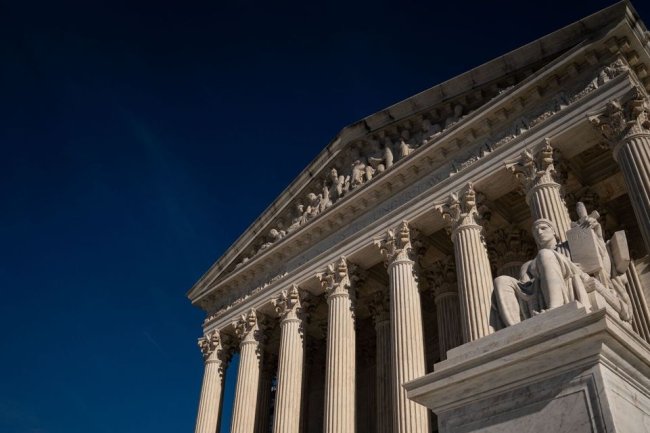Some Banks Struggle to Report Uninsured Deposits Correctly
One New Jersey lender is on its fourth try getting its year-end number right Since July 24, Provident and three other banks that previously restated their Dec. 31 uninsured-deposit numbers downward had restated their numbers yet again—this time to revise them back up. Thomas P. Costello / USA TODAY NETWORK Thomas P. Costello / USA TODAY NETWORK By Jonathan Weil Aug. 9, 2023 10:00 am ET It seems like an easy question for a bank to answer: How much of its deposits are covered by federal deposit insurance and how much are uninsured? Turns out this is hard stuff for some banks. A case in point: Provident Bank. On Feb. 14, the Jersey City, N.J.-based lender said its uninsured deposits were $5.0 bill


It seems like an easy question for a bank to answer: How much of its deposits are covered by federal deposit insurance and how much are uninsured? Turns out this is hard stuff for some banks.
A case in point: Provident Bank. On Feb. 14, the Jersey City, N.J.-based lender said its uninsured deposits were $5.0 billion as of Dec. 31. On June 13, it slashed that number to $3.1 billion, or 29% of total deposits.
There’s more. On July 14, Provident raised the number to $4.9 billion. Then, on July 28, Provident raised it to $5.3 billion, or 50% of total deposits. A spokesman for Provident, a unit of Provident Financial Services, declined to comment.
Provident also restated its first-quarter uninsured-deposits number—twice. Originally, Provident said it was $2.8 billion as of March 31. Then on July 14, it boosted that to $4.5 billion. Then on July 28, it restated again, bumping it to $5 billion.
The Federal Deposit Insurance Corp. is doing what it was designed to do when banks such as Silicon Valley and Signature go under: cover insured deposits. Here’s how the FDIC works and why it was created. Photo illustration: Madeline Marshall
What gives? Before this year, having a high percentage of uninsured deposits wasn’t widely seen as a big problem. Then Silicon Valley Bank began to teeter in March. About 88% of its deposits were uninsured at year-end, which is why its customers fled when the bank ran into financial trouble. At Signature Bank, which failed soon after, 90% of deposits were uninsured. In the following weeks, dozens of lenders restated their financial reports with banking regulators to show smaller year-end numbers for their uninsured deposits.
The incentives were there. Optically, smaller looks better. It also could help cut expenses. The Federal Deposit Insurance Corp. in May said it would impose a special assessment on banks with more than $5 billion of assets to cover the $15.8 billion that it cost to guarantee uninsured deposits at Silicon Valley Bank and Signature. The assessment would be based on a bank’s uninsured deposits as of Dec. 31.
Since Silicon Valley Bank’s collapse in March, 47 banks restated their Dec. 31 uninsured deposits downward by a total of $198 billion, a Wall Street Journal analysis showed. The FDIC was seeing problems with the numbers, too.

The bank with this year’s biggest downward restatement of uninsured deposits was Bank of America.
Photo: Justin Sullivan/Getty Images
When a bank restates an important number like uninsured deposits several times, “it indicates that their information system is not adequate for the task,” said Bart Dzivi, a lawyer and former counsel to the Senate Banking Committee, who was speaking generally, not about particular banks. “And if that’s wrong, what else is wrong?”
In a July 24 letter to the industry, the FDIC said it had observed some banks reporting their uninsured-deposit numbers incorrectly. Since then, through Tuesday, four of the 47 banks that previously restated downward had restated their numbers yet again—this time to revise them back up. Besides Provident, the others were Centennial Bank, a unit of Conway, Ark.-based Home BancShares ; Bank OZK, based in Little Rock, Ark.; and Veritex Community Bank, a unit of Dallas-based Veritex Holdings. The banks either declined to comment or didn’t respond to requests for comment.
The bank with this year’s biggest downward restatement was Bank of America.
In a May 5 filing, it said its uninsured deposits were $784 billion as of Dec. 31, which was $125 billion, or 14%, less than it reported originally. After the FDIC’s letter, Bank of America said it stood by its revised number and had no plans to revise it again, which it hasn’t. Using the smaller figure would save Bank of America about $300 million over two years on its special assessment.Other lenders, such as Bank of Hawaii, changed their reporting methodology starting in the first quarter without restating past results. Bank of Hawaii in its original first-quarter filing with the FDIC showed a 20% drop in uninsured deposits to $8.7 billion, or 42% of deposits, from $10.8 billion as of the fourth quarter. The March 31 deposit number, as initially reported, excluded deposits backed by collateral. The FDIC in its July 24 letter said that reporting method was unacceptable because “the existence of collateral has no bearing on the portion of a deposit that is covered by federal deposit insurance.”
Over the weekend, on Aug. 5, Bank of Hawaii restated its first-quarter report and raised the number to $10.3 billion, or 50% of deposits. Bank of Hawaii didn’t respond to requests for comment.
Write to Jonathan Weil at [email protected]
What's Your Reaction?













